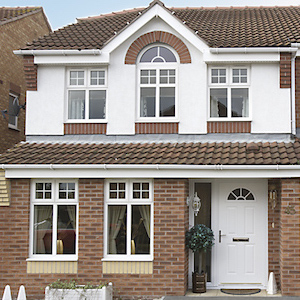A Window in the Door: More than Just a Pane of Glass
In the beginning look, a window in a door may seem like an easy architectural function. It's simply a piece of glass that permits light to filter through or provides a glance of what's on the other side, right? However when you pause to think of it, this apparently mundane component carries considerable functional, aesthetic, and even symbolic weight. Whether it graces the doors of your home, workplace, or preferred café, a window in a door is even more than just a pane of glass-- it's a bridge in between spaces.
1. Performance: The Practical Role of Door Windows
The addition of a window to a door uses practical benefits that can boost both property and commercial areas:
Natural Light: One of the primary functions of a window in a door is to allow sunlight to pass through. In areas with limited windows or confined areas like corridors or interior offices, this feature can lighten up the space, lower the dependence on artificial lighting, and develop a more welcoming atmosphere.
Visibility and Safety: A window in a door supplies a clear line of vision for those on either side. visit the following site is specifically important in business and industrial settings, such as restaurants, factories, or schools, where people regularly move through doors. Visibility reduces the risk of mishaps (e.g., somebody walking into a door or hitting someone on the other side).
Ventilation and Energy Efficiency: When coupled with operable glass or modern innovations like double-glazing and low-E glass, door windows can contribute to much better air flow and energy performance in your house or work area.
Security: While breaking glass may appear like an open invitation to robbers, modern designs have actually addressed this issue. Strengthened glass, tempered glass, or designs with narrow panes can make the window resistant to forced entry while still satisfying of exposure and light.
2. Aesthetic Appeal: Enhancing the Visual Identity of a Space
From a design viewpoint, windows in doors can raise aesthetic appeal in numerous ways:
Design and Character: The design of the window often matches the architectural ambiance of the home. A home with a rustic or farmhouse appearance may include a door with frosted or stained glass, while a streamlined, modern-day home might showcase a minimalist door with easy, clean lines.
Modification: Door windows come in numerous shapes and sizes-- round, rectangle-shaped, oval, arched, or custom-made to match your preferences. This flexibility offers homeowners and designers the capability to develop doors with artistic style and individual touches.
Curb Appeal: The entry door is often the focal point of a home's exterior, and a properly designed window within it can turn an otherwise regular door into a vibrant design statement. Frosted or etched glass, for example, can communicate sophistication and elegance.
3. Significance and Meaning: Beyond the Practical and Aesthetic
On a much deeper level, a window in a door brings symbolic meanings that resonate throughout cultures and contexts:

Openness and Connection: A door with a window promotes a sense of connection between two discrete areas. Whether it's between a home and its front lawn or an office conference room and a corridor, the window can make these areas feel less separated and more integrated.
Openness: In workplaces, doors with windows represent openness and accountability. A manager's workplace with a glass-panel door, for instance, can signify approachability, reducing the hierarchical barrier that a strong closed door may develop.
A Threshold of Opportunity: Metaphorically speaking, a door with a window can represent a view into new chances. It provides a preview into what lies ahead-- a fitting image for personal development and expedition.
4. Modern Trends: Innovations in Door Window Design
Advances in innovation and design are constantly improving how we think of door windows. Here are a couple of trends to watch:
Smart Glass: With the introduction of wise technology, windows that can change from transparent to opaque with the touch of a button are acquiring popularity. These high-tech options provide privacy as needed without compromising the advantages of natural light.
Energy Efficiency: Double- and triple-glazed door windows with advanced insulation are becoming requirement in energy-conscious homes. These not just keep your energy costs in check however likewise reduce environmental impact.
check over here : Patterns, etching, and colored glass inserts are becoming more complex, using house owners endless possibilities to individualize their doors.
Security Upgrades: Impact-resistant glass and shatter-proof movies are progressively being incorporated into door windows, particularly in locations susceptible to storms or high-security requirements.
5. Factors to consider for Choosing a Door with a Window
Before selecting a door with a built-in window, there are a few elements house owners and designers must remember:
Privacy: While a window supplies exposure and natural light, it can likewise compromise personal privacy. Frosted glass or tactically placed window styles can reduce this issue.
Maintenance: Glass in doors will collect finger prints, dirt, and spots, particularly in high-traffic locations. Going with products that are easy to tidy or have protective finishings can conserve time.
Combination with the Environment: Choose a door window style that matches the environments. A door in a quiet, property community may prioritize aesthetics, while one in an industrial building might stress resilience and safety.
Conclusion: A Small Feature with Significant Impact
As basic as it might appear, a window in a door is a function that blends functionality with charm, security with style, and connection with individuality. It's a reminder that the tiniest details in architecture can have the power to change not just our spaces however likewise the method we engage with them.
Whether you're peering through a glass panel to invite a guest or letting natural light filter into your home, a window in a door is far more than a design element-- it's a way to open ourselves to the world, one pane of glass at a time.
